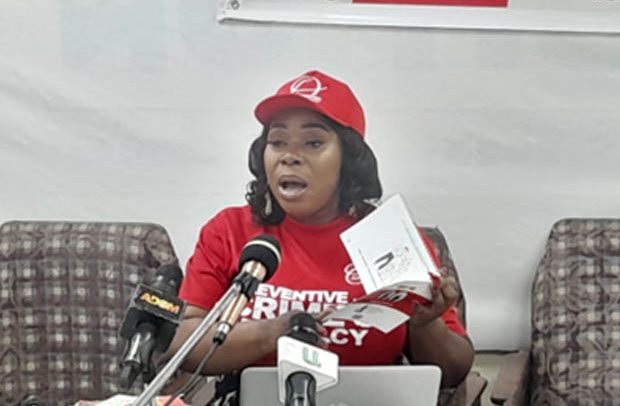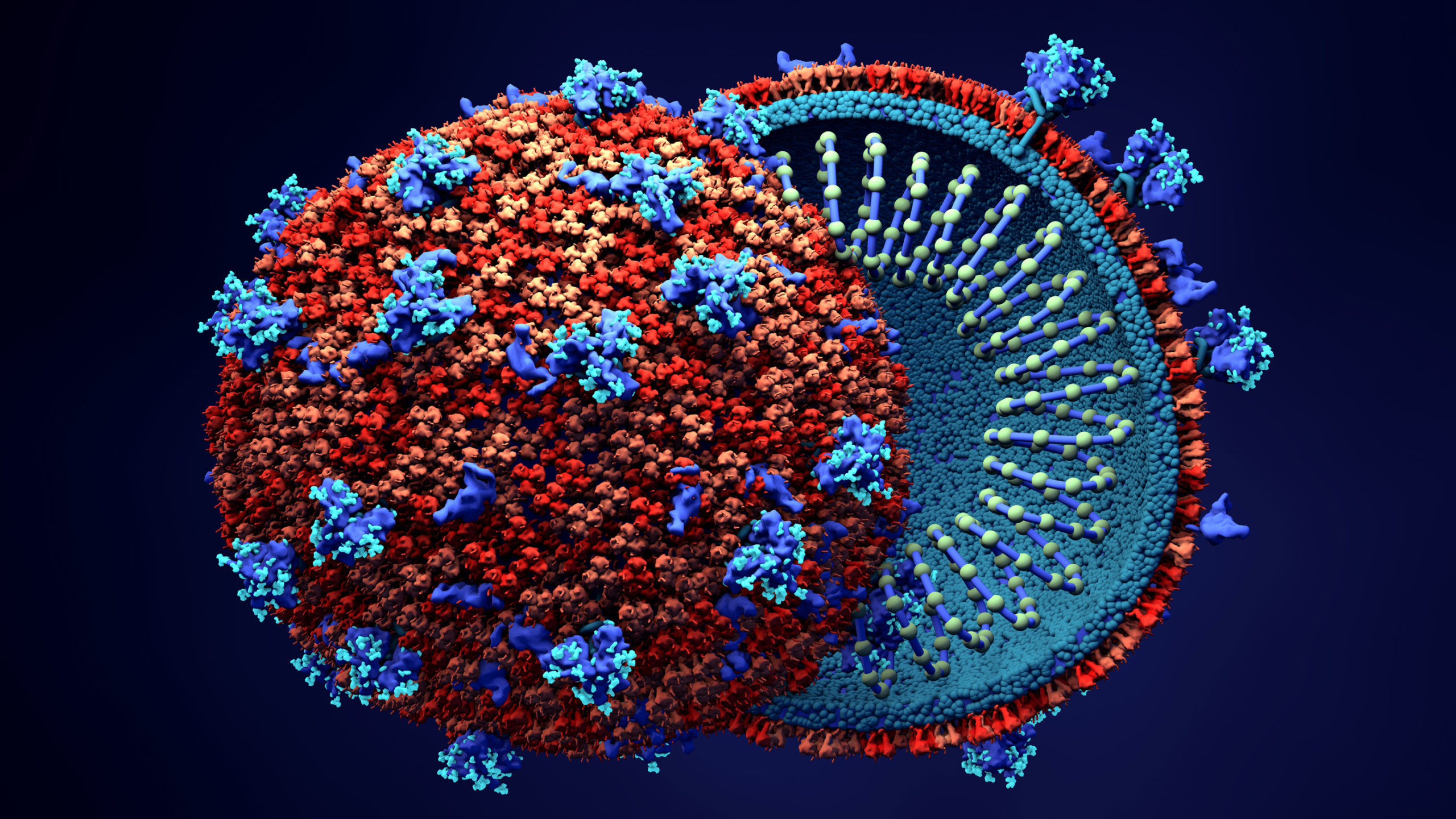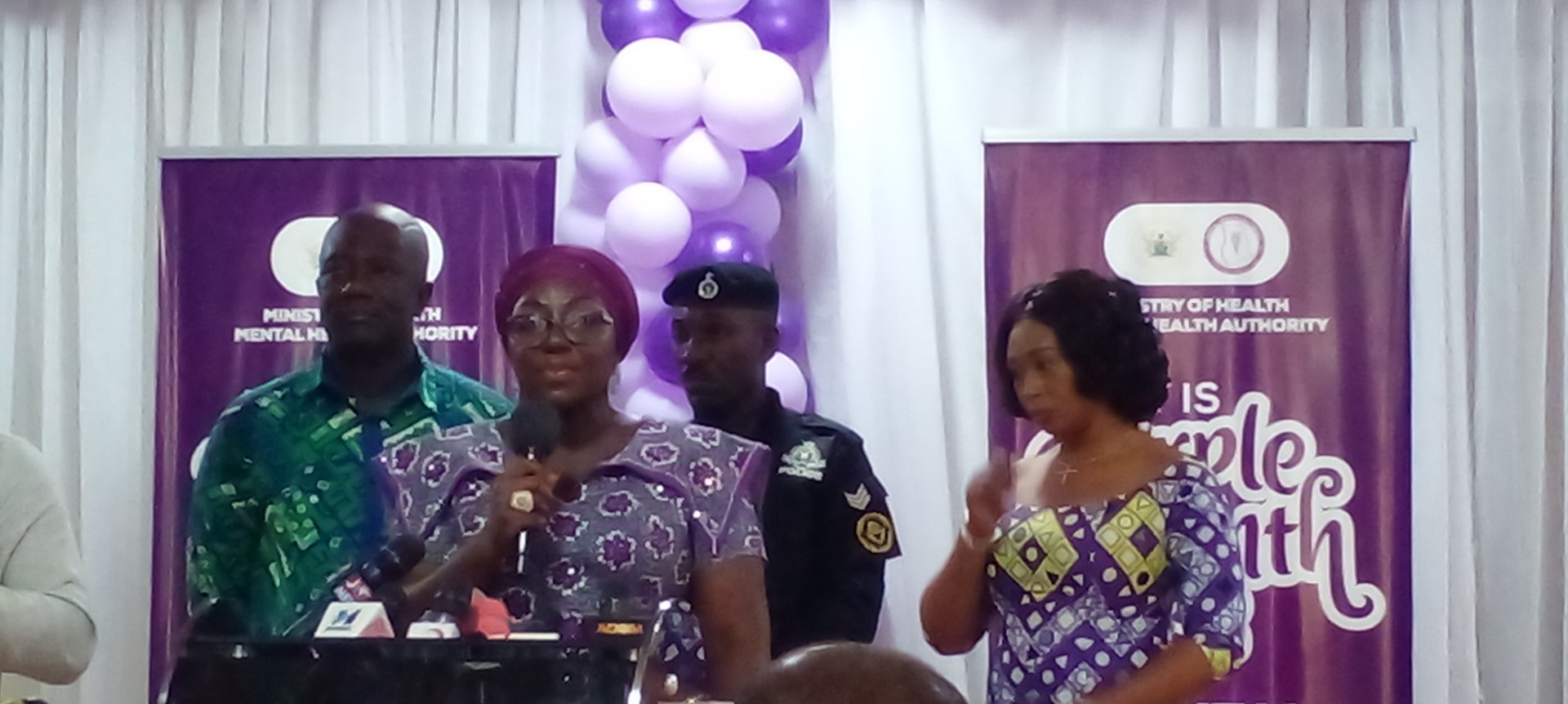
The lockdown of Ghana’ hotspots is now into its third week, and the principal streets of Accra and Kumasi have rarely been as empty since the curfews of the revolutionary era some four decades ago. Residents of the affected areas have now been sheltering in their homes for 14 days, and compliance with the directive has generally been good.
But there have been challenges too. For many residents of both cities the experience has been trying, especially for those at the lower end of our socioeconomic ladder and the desperate many who live in the margins of our shamefully unequal society. Some have struggled with isolation and monotony. Others with the excesses of the enforcers and the anxieties of these uncertain times. Many thousands more are dogged by the humbler concerns of food access and financial security.
The anticipation for a return to normal life is keen and universal, but we will all have to wait a while longer now. Last Thursday, the President announced to the nation that the lockdown would be extended for another week. The restrictions are now scheduled to expire at 1:00AM on Monday, April 20.
In his address last Thursday, the President struck an optimistic tone about the national effort to combat this viral menace and about the effectiveness of the lockdown. He was buoyed by the early results from the “enhanced contact tracing” that is presently underway in Accra and Kumasi.
Staff of the Ghana Health Service, as of April 8, had collected 37,405 samples from the primary, secondary, and tertiary contacts. Our reference labs had processed 14,611 of these samples, and the early results confirmed that 77 persons of that number had been infected with the virus.
These 77 confirmed cases were, indeed, an extremely low fraction of the completed testing. Public health scientists would describe this outcome as a 0.53% prevalence of COVID-19 infections among the traced contacts. That statistic describes what percentage of a group has a particular disease at a certain point in time. Quite understandably, this was a source of some relief to the public, and it spurred hopes in certain quarters that an end to the lockdown might be just around the corner.
But is that what these results really mean, and can we infer so much from them?
There is more to the prevalence of a disease than just a percentage, and especially when it is based on a group of persons like the traced contacts . The value that public health scientists place on that figure, and their confidence in drawing conclusions about the larger population from it, is based on a foundational concept of their field – its validity.
That is a two-part matter: whether the information gathered through the enhanced tracing exercise accurately answers the question we are interested in, and to what extent we can generalize those conclusions.
The champagne will have to stay on ice a while longer, with apologies.
What We Want to Know
The primary goal of the lockdown was to slow down the rate of new infections in the country. The reality is that if we can reduce how often we come into contact with each other, we can reduce the opportunities to pass on or contract the virus. Success in this effort will lower the number of new COVID-19 cases we record on a daily basis. This will save our health system from being overwhelmed, and it will lower the risk to our healthcare workers by lowering their exposure to the virus. And if all of this goes to plan, then we just might spare ourselves the ghastly human tragedy unfolding in Europe and America. Projections are not promises, but this is a sound plan and it should work.
At the time the lockdown was announced on March 27, 137 coronavirus cases had been confirmed in Ghana. Some 78 of these were detected among a group of 1,030 travellers who were placed under mandatory quarantine on arrival in Ghana on March 21 and 22. Of the 59 remaining cases – we are led to believe – most had recently returned from travel to one global hotspot or the other, and their numbers were supplemented by persons who had subsequently been infected through contact with them.
But at least 3 cases of this 137 did not fit into any of these categories. They had no travel history and no contact with a confirmed case. These were the harbingers of a potentially nightmarish scenario: local transmission of COVID-19. I say “at least” because the government has not released such identifying details of confirmed cases since March 20, when they constituted about 20% of Ghana’s 16 cases. And as I write this, just over three weeks later, 16 has grown to 566. It would be rather naive to assume that 3 is still 3.
It is exactly this reality – and all of its precipitants and portents – that the lockdown directive acknowledges, even if the politics of the moment will not oblige an explicit concession. And it is exactly this reality that highlights the secondary goals of the lockdown: to identify and isolate as many currently infected persons while they are still immobilized. In finding these carriers who have not yet been captured in the count of confirmed cases, Ghana will better understand the extent of the threat posed by COVID-19. In isolating these persons and quarantining their contacts, the risk of spread will be mitigated and some marginal return to normalcy can be considered.
But only if we do it the right way.
We need a good game plan if we are to be successful, one that reflects an acceptance of reality and an understanding of the epidemiology of the disease. And we must succeed, because failure will come at a staggering cost in life and treasure. But to know if we have been successful, we will need to ask the right questions and we will need to answer them in the right way.
The right questions are easy, and the objectives of the lockdown spell them out. To what extent has COVID-19 spread among the general population? And by how much, if at all, has the rate of new cases decreased since the restrictions on movement were imposed?
The prevalence rate from the early results – from all of the enhanced contact tracing even – does not answer the latter convincingly. It does not answer the former at all. And our next steps in the race against this virus and against time itself cannot be guided by this alone.
Timing Matters
The basic presumption of contact tracing during a lockdown is that the identified persons have already been exposed to the virus through their interaction with known cases or their contacts. The restrictions on movement simply freeze all these people in place such that any further spread of the disease by those who truly are infected is largely contained within their own households.
Of course, not everyone is stuck at home and many do not have one to be stuck in at all. The first group is dominated by people whose work provides the essential services that make the lockdown feasible and functional for the rest of us. Some of these services also mitigate the suffering of the second group – the homeless, the incarcerated, and other socially vulnerable persons who cannot meaningfully quarantine themselves. Their odds of contracting or passing on the virus are not as substantially reduced as for the rest of us, so some amount of spread outside households remains a risk even after the lockdown is imposed.
It is all of these infections that actually occur during the lockdown – the new cases in households and across public domains – that we seek to know in order to understand how impactful the restrictions have been. The daily rate of new cases following the shelter-in-place order is what we want to measure, but the 77 positive results recorded from contact tracing as of last Thursday did not necessarily address that.
Why is that? Almost all of the information on which the enhanced contact tracing program is based was collected prior to the lockdown. That exercise presumes that any relevant exposures had already occurred, and that the consequent infections had already occurred as well. The result is a snapshot of the existing COVID-19 infections among the traced contacts that predates the lockdown. The samples were merely collected, processed and confirmed after the fact.
Those 77 positive results were just newly confirmed cases, and that is not the same thing as newly occurring cases. That difference matters a great deal to an accurate evaluation of the merits of the restrictions, because the former tells us next to nothing about the impact of the lockdown on the emergence of new cases of the disease. And it is this degree of that impact, rather than the test results of already infected persons, that should inform any decisions about the future of the lockdown.
An Incomplete Picture
You may rightly wonder what the low prevalence of the novel coronavirus among the contact tracing group says about the overall situation in Ghana, even if the 0.53% rate from the early results offered little guidance on the usefulness of the lockdown. Does it not at least suggest that the spread of COVID-19 is relatively limited in our nation? That depends on the initial scope of testing and the efficiency of contact tracing.
Here’s some more sand for your gari.
The enhanced contact tracing program is an expansion of Ghana’s existing testing strategy. The general approach begins with persons who test positive in the course of seeking care at medical facilities for symptoms of the novel coronavirus. These are the index cases. Because this method of contact tracing begins with sick people showing up at hospitals, it is described as a clinical approach.
This is considerably different from a public health approach, the centerpiece of the fight against COVID-19 in both South Korea and Germany. That strategy also identifies some index cases by testing them when they are seeking care, but it identifies many more through mass voluntary testing throughout the community. Because the public health approach casts a far wider net at the outset than the clinical one, it catches more than the very sickest people. The index cases often include persons with mild symptoms who might never be sick enough to seek medical attention.
But the greatest strength of the public health approach is that it is able to identify members of a now notorious group – the asymptomatic carriers. These people will never have symptoms at all, despite being infected with the virus. Without symptoms, they will never feel sick, they will never know they are infected, and they will never show up at a clinic or hospital. At least not for COVID-19.
That also happens to be the greatest weakness of the clinical approach to testing and contact tracing. It is blind to persons with mild symptoms or no symptoms at all, and it is blind even to those with moderate or serious symptoms who do not seek medical care over concerns of costs, preference for traditional remedies, fear of stigmatization or just plain old dislike of hospitals. And with a relatively less complete pool of index cases, the contact tracing effort will begin with far less information. No matter how “enhanced” or technologically savvy it may be, the results of contact tracing using the clinical approach will inherently be an incomplete picture.
This is the critical flaw of Ghana’s present approach. Prior to the lockdown, travel history and presentation of symptoms were effectively prerequisites for a COVID-19 test. An undermanned and inefficient contact tracing program supplemented the pool of candidates for testing with individuals who had interacted with confirmed positive cases. But that was about as far as Ghana’s testing program went.
This approach to testing reflected the persistent obsession with the notion that sick travellers and their subsequent contacts are the main threats we face where COVID-19 is concerned. And it ignored the limitations of a contact tracing program that was desperately lagging in the race to catch up with the virus. It is on this flawed premise and inefficient process that the entire enhanced contact tracing exercise is based, and from which emerge the 137 index cases whose contacts are now being tested.
Therein lies the problem. Those 137 cases recorded at the time the lockdown was announced did not represent a complete picture of COVID-19 in Ghana because of the obstinate insistence on the clinical approach for testing and tracing. Since the original set of index cases was not complete by virtue of all the attendant omissions of the clinical approach, the composite of their primary, secondary and tertiary contacts certainly is not either. The test results of this fraction of the picture cannot be generalized as representative of the true prevalence of COVID-19 in the country at large. And they cannot be the principal basis for any informed policy choices.
Otherwise we will be fighting a forest fire with no sense of the size of the blaze, and with no idea where the floating embers may be starting new flames.
Hope and Hubris
The President’s remarks about the early test results have mirrored public optimism about their implications, suggesting in his last address that “our common efforts have been modestly successful in containing the virus and minimising its spread.” And his prior address on April 5 laid the ground for this conclusion when he said of the pending outcome of the contact tracing effort, “It is the results of these tests that will determine our future course of action.”
We should all hope they do not.
Much of our national response so far is captured in a consistent theme of government communications about the pandemic, which often insinuate that Ghana’s problem is mainly one of “imported cases”. So tracing the local contacts of these travellers and theirs, the logic goes, will allow us to arrest the situation in its infancy. And it is around this illusion of hope, or hubris, that the President’s advisors appear to be structuring the fight against COVID-19.
But that illusion is blind to the patent reality of ongoing local transmission and to the implications of asymptomatic infections in that context. The low coronavirus prevalence observed in the early results is less a representation of the true scale of Ghana’s crisis than it is a direct consequence of the naivete and narrowness of the choices we continue to make with regards to testing.
We know of at least 3 cases of community spread that could not be traced back to any confirmed cases at the time they were detected. So we know a number of critical links in the transmission chain were never actually identified. A single one of those missing links could produce as many as 80 more infections within two weeks, and it would be terribly naive to assume that the contact tracing effort missed just one.
At least a quarter of all the infections resulting from these missing links – taking Anthony Fauci’s word for it – would not have been detected before the restrictions came into effect because they were asymptomatic. They would never have had any symptoms and the tracers would not have been looking for them because they would not have known to. But many of these resulting infections would eventually have developed the trademark symptoms of COVID-19. Some would have been unwell enough to seek medical care, at which point they may have been tested.
The 233 additional cases confirmed outside the enhanced tracing program since the start of the lockdown certainly include some of this number. They – and all their yet unknown, yet untraced contacts – are the embodiment of Ghana’s reality check.
Next Steps
The immediate decision before the President is about the further extension of the lockdown beyond April 20. That decision will determine how the story of COVID-19 ends for Ghana. Calling it monumental is putting it lightly. This is why it must be made on the correct information and at the right time. And that brings us back to the fundamental goal of a lockdown.
The restrictions on movement have no bearing on the biological infectiousness of the COVID-19 virus itself. No social intervention can change that. But the lockdown can change how frequently the virus is passed on during the period, if the restrictions are effective at reducing the average contacts per person over the course of its enforcement.
The measure of this is the relative reduction in movement within the hotspots since the lockdown was effected, and it is the degree of the reduction that directly translates into the slower rate of new cases. This is what the President’s decision must be based on, and not the results of the contact tracing.
Without mass testing we cannot accurately estimate the true rate of new infections, so we must rely on some measure of the reduction in movement instead. We could consider vehicular traffic in the lockdown areas, or pedestrian congestion in our open markets. We could also rely on data from the telecommunications companies, or on information from third-parties like Google whose recently published mobility reports have sought to estimate the reduction in activity in cities around the world using location data from mobile devices.
But if the President’s advisors do not have an accurate estimate of the effect of the lockdown on movement in the hotspots, then the decision should be deferred until such a time as they do. And the lockdown will have to remain in place until then.
Any attempt to base such a decision on the results of the enhanced contact tracing – as the President’s speech suggested – would be unscientific and unsound. The consequences of that blunder could be calamitous as we have no proper idea of the scale of the problem thanks to the shortsightedness of our testing. The terrible costs of lifting the lockdown prematurely – and releasing the virus from its restraints – would ultimately be measured in Ghanaian lives.
We can only hope the President’s advisors know better and do better. For all our sakes.
—
About the Author: Nana Kofi Quakyi (@nkquakyi) is a Research Fellow and Adjunct Assistant Professor in the Department of Health Policy and Management at New York University’s School of Global Public Health, where he is also a doctoral candidate. He teaches courses at the undergraduate and masters level and received NYU’s Future of Africa Award in the faculty category in 2018.
The post Nana Kofi Quakyi writes: Data and decisions; Ghana’s fight against COVID-19 appeared first on Citinewsroom - Comprehensive News in Ghana, Current Affairs, Business News , Headlines, Ghana Sports, Entertainment, Politics, Articles, Opinions, Viral Content.
Read Full Story

























Facebook
Twitter
Pinterest
Instagram
Google+
YouTube
LinkedIn
RSS